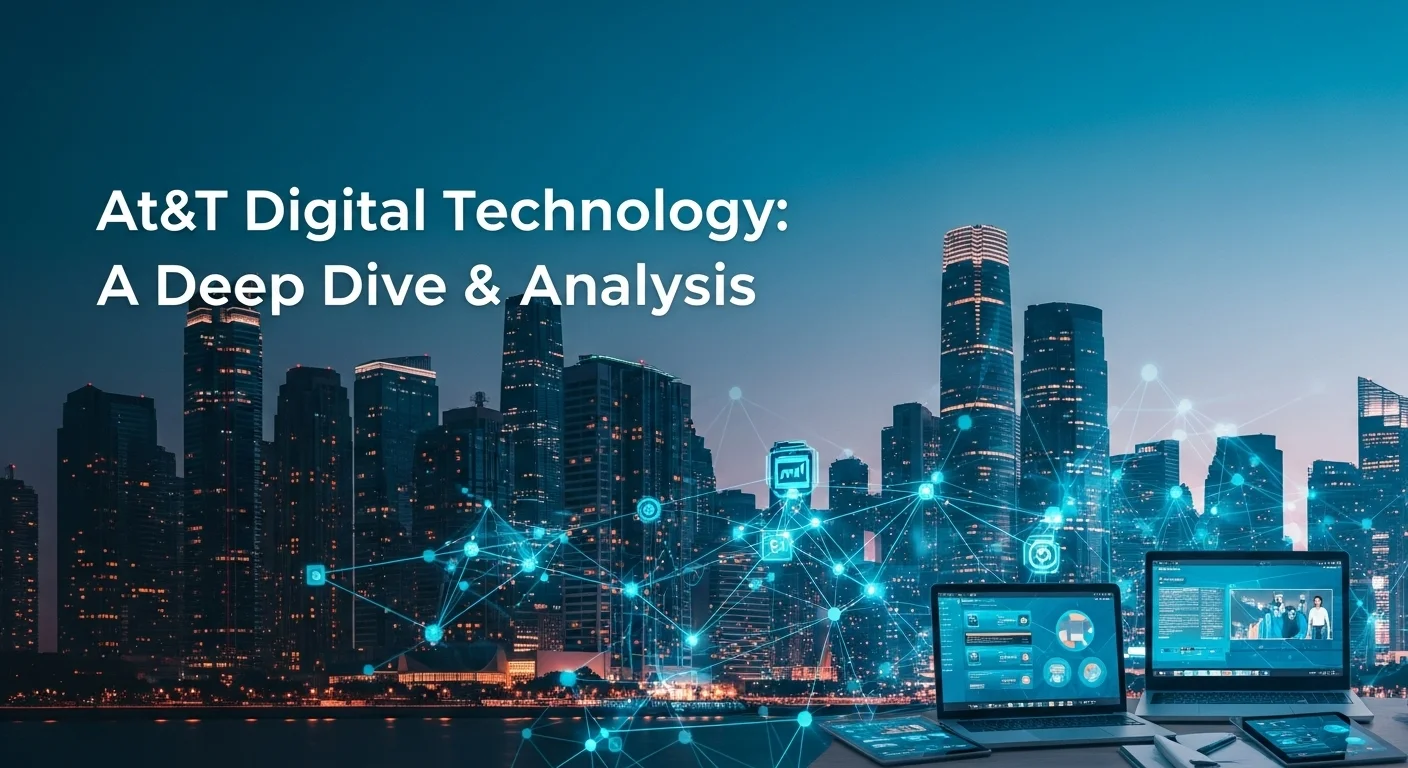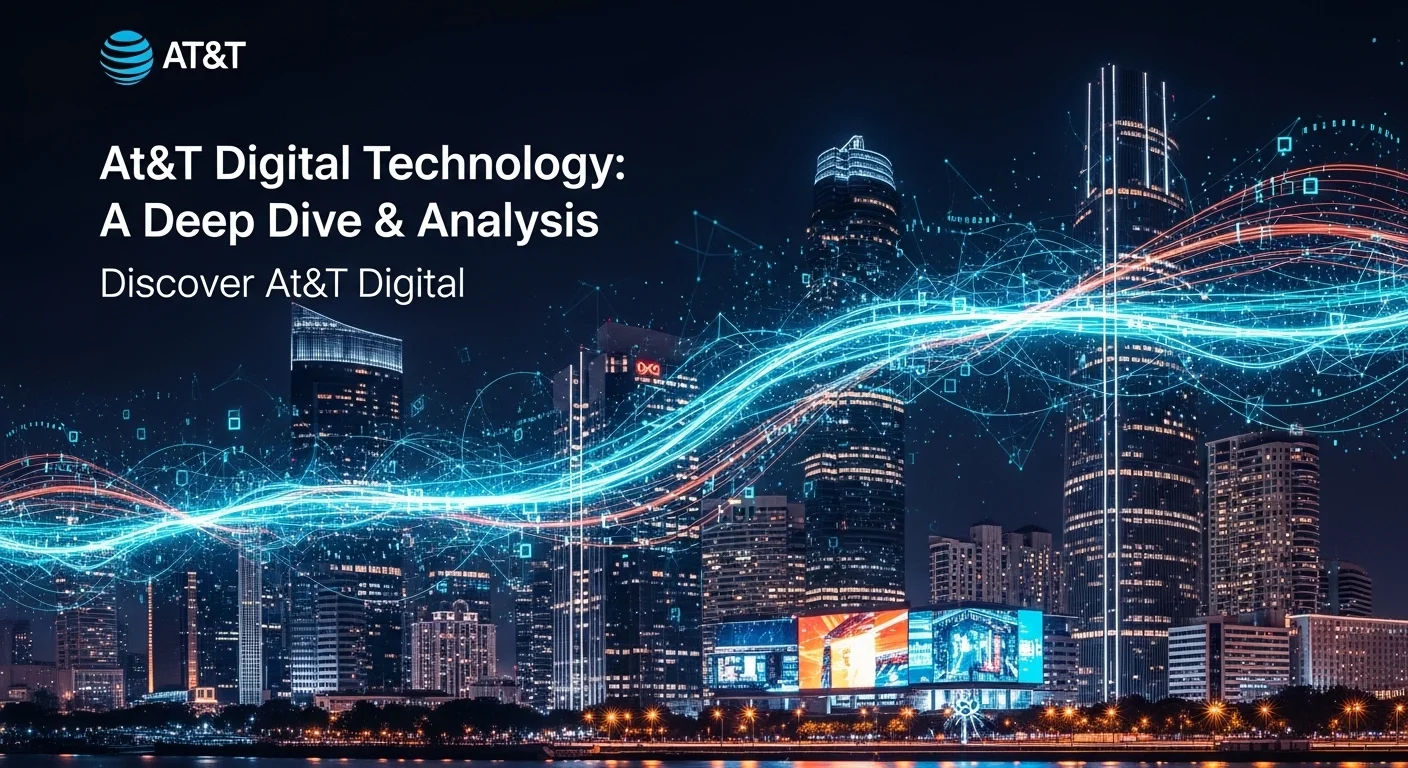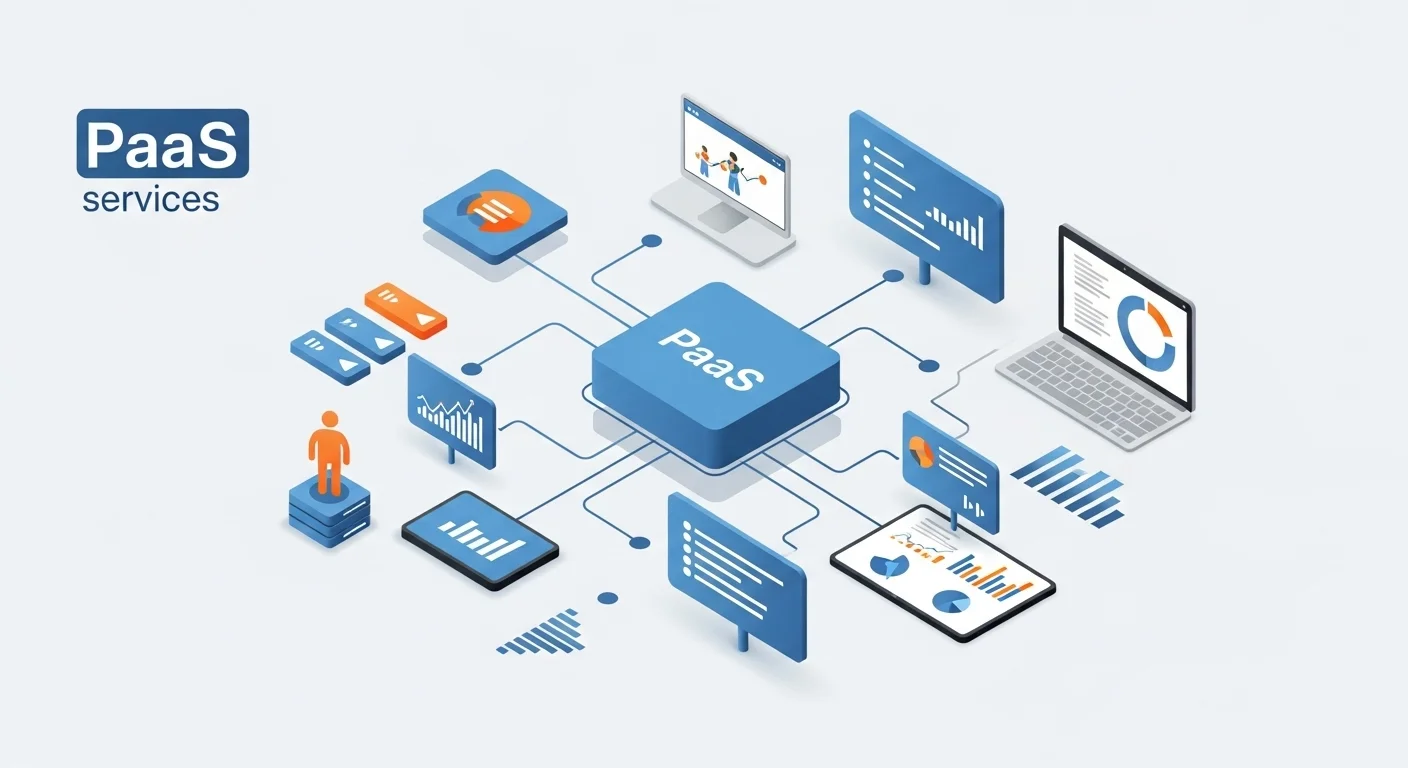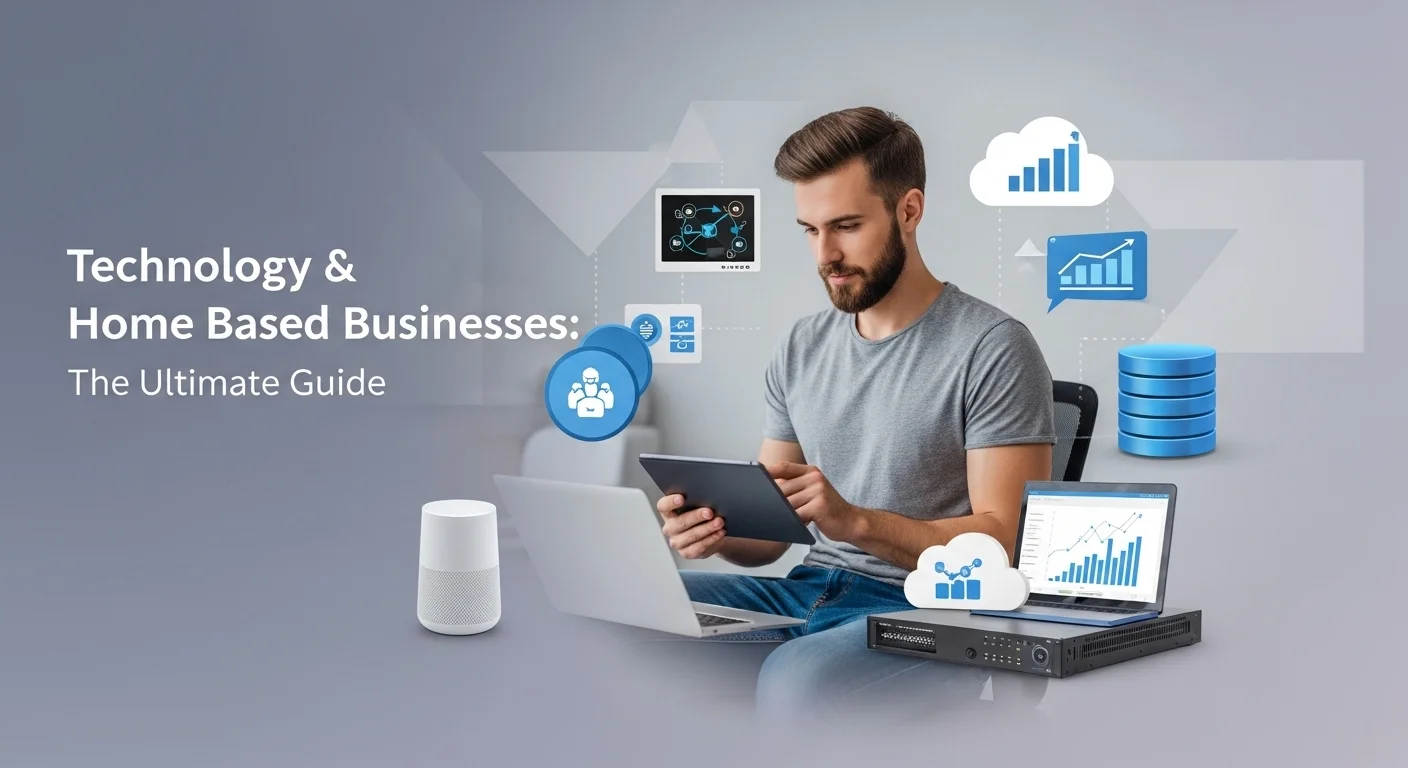At&t Digital Technology: A Deep Dive & Analysis

Executive Summary
AT&T Digital Life emerged in 2013 as a significant player in the burgeoning smart home and security market, representing a major technology initiative by the telecommunications giant. This article provides a comprehensive analysis of the At&t Digital platform, examining its technological architecture, which integrated wireless sensors, cloud-based controls, and professional monitoring. We delve into the specifics of its consumer offerings, including the at&t digital life home security and at&t digital life alarm system, and explore the business strategy behind its launch. The service was ultimately discontinued in 2022, with customers transitioned to Brinks Home Security. [4, 5] This case study explores the reasons for this strategic shift, including intense market competition and the high costs of maintaining a proprietary ecosystem. [9] Furthermore, we analyze the legacy of At&t Digital, extracting key lessons for today's technology businesses in the realms of IoT, cybersecurity, cloud computing, and sustainable business models. The platform's journey offers valuable insights into the challenges of innovation, market dynamics, and the evolution of digital services in a rapidly changing technological landscape.
Table of Contents
What is At&t Digital and why is it important in Technology?
The term 'At&t Digital' primarily refers to AT&T Digital Life, a significant and ambitious venture by the telecommunications behemoth into the Internet of Things (IoT) and smart home technology sector. Launched with considerable fanfare in 2013, Digital Life was an all-encompassing, professionally installed, and monitored home security and automation platform. [1] It represented a strategic diversification for AT&T, moving beyond its core offerings of mobile and broadband services to establish a strong foothold in the connected home—a market that was just beginning to show its massive potential. The importance of this initiative in the broader context of technology cannot be overstated. It was a real-world, large-scale deployment of a consumer-facing IoT ecosystem by a major corporation, serving as both a benchmark and a case study for the opportunities and challenges inherent in the space. The service promised to seamlessly integrate home security with home automation, allowing users to control everything from their alarm system to lights, thermostats, and door locks via a single, unified application accessible from smartphones, tablets, or computers. [1, 12] This was a powerful proposition at a time when the smart home market was fragmented, often requiring users to juggle multiple apps and incompatible devices.
The technological foundation of AT&T Digital Life was built on a combination of wireless technologies, cloud computing, and dedicated hardware. At the heart of each home installation was the Digital Life Controller (DLC), a central hub manufactured by Cisco that acted as the brain of the system. [17, 26] This controller utilized multiple communication protocols to connect with a wide array of sensors and devices. It featured a built-in 3G cellular module, ensuring a primary, reliable connection to AT&T's network that was independent of the customer's home internet service. [31, 37] This was a critical design choice for a security-focused product, as it meant the system would remain connected to the monitoring center even if the home's broadband went down or power was cut, thanks to a 24-hour battery backup. [19] The system also supported Wi-Fi and Z-Wave, a popular low-power wireless protocol for smart home devices, which allowed for the integration of a wide range of third-party products, from smart locks to lighting controls. This hybrid communication architecture was a forward-thinking approach that provided both reliability for critical security functions and flexibility for lifestyle automation features. The entire ecosystem was managed through a sophisticated cloud platform, where user data was processed, and from which remote commands were sent. This reliance on cloud infrastructure was pivotal, enabling remote access, complex automation programming, and the delivery of real-time alerts to customers. [33]
From a business perspective, AT&T Digital Life was an attempt to create a new, recurring revenue stream and increase customer 'stickiness.' By bundling home security and automation with its existing services, AT&T hoped to deepen its relationship with customers, making them less likely to switch to competitors. The business model involved an upfront equipment and installation fee followed by a monthly subscription fee, which varied based on the selected package. [1, 11] There were typically two main tiers: a basic 'Simple Security' package and a more comprehensive 'Smart Security' package, which could be expanded with add-on automation packages for cameras, energy management, water leak detection, and more. [10] This tiered, customizable approach was designed to appeal to a broad range of consumers, from those seeking a basic at&t digital life home security system to those wanting a fully automated smart home. The service was also notable for being provider-agnostic, meaning customers did not need to have AT&T as their mobile or internet provider to subscribe, broadening its potential market. [1] The professional installation and 24/7 professional monitoring from AT&T-owned and operated centers were key differentiators, positioning Digital Life as a premium, reliable alternative to the emerging DIY security systems. [12, 24] The at&t digital life alarm system was not just a local siren; it was a direct link to a team of security professionals ready to dispatch emergency services, providing a level of assurance that many consumers valued highly.
The importance of AT&T Digital Life also lies in its role as a market catalyst and a learning experience. Its entry, along with similar moves by companies like Comcast with Xfinity Home, legitimized the smart home market and spurred competition among both traditional security companies like ADT and new tech players. [9, 25] It demonstrated the viability of a unified platform and highlighted the consumer appetite for integrated security and automation. However, the platform's lifecycle also exposed the significant challenges of operating in this space. The home security market is notoriously competitive, with high customer acquisition costs and low margins. [9] AT&T faced the immense operational complexity of managing hardware inventory, nationwide installation logistics, and customer support for a diverse range of devices. Furthermore, the rapid pace of innovation in the DIY smart home sector, led by agile companies like Ring and SimpliSafe, created a new competitive pressure. These companies offered lower costs, no contracts, and easy self-installation, appealing to a different, but growing, segment of the market. The convenience of a simple device like the at&t digital life keychain remote, which allowed users to arm and disarm the system easily, was a great feature, but the overall cost and commitment of the system became a point of contention for many potential customers. [19] The reliance on a proprietary ecosystem, while ensuring quality control, also limited the speed at which new technologies could be integrated compared to more open platforms. Ultimately, the decision to discontinue the service in 2022 and transition customers to Brinks Home was a strategic one, reflecting a shift in AT&T's focus back to its core telecommunications business and an acknowledgment of the immense resources required to compete effectively in the smart home security arena. [4, 13] The journey of the at&t digital life monitoring center from a key strategic asset to a divested operation provides a stark lesson in corporate strategy and market dynamics. The platform's history serves as a rich case study for businesses exploring ventures in AI, cloud services, and cybersecurity, demonstrating the critical importance of a sustainable business model, market adaptability, and a clear understanding of the long-term commitment required to support a complex technology ecosystem. The overall at&t digital life security offering was robust, but its story is a testament to the fact that technological strength alone does not guarantee market success.

Complete guide to At&t Digital in Technology and Business Solutions
A complete guide to the AT&T Digital Life platform requires a deep dive into its technical methods, business techniques, and the resources it offered. Technologically, the system was a sophisticated, multi-layered ecosystem designed for reliability and user control. The foundation was the professionally installed hardware, centered around the Digital Life Controller (DLC). [37] This hub was the local processing and communication gateway, linking every sensor and device within the home. Its use of a primary 3G cellular connection for alarm signaling was a key technical method to ensure high availability, a standard practice in the professional security industry to bypass the vulnerability of relying solely on a home's internet connection, which can be easily cut or fail. [31] The secondary path via the customer's broadband connection provided redundancy and supported high-bandwidth activities like video streaming. [37] The system employed a variety of sensors, including door/window contact sensors (both surface-mount and recessed), motion detectors, glass break sensors, smoke detectors, and carbon monoxide sensors. [19] These devices formed the core of the at&t digital life alarm system, providing comprehensive perimeter and interior protection.
Beyond basic security, the platform's technical prowess was showcased in its automation capabilities. By leveraging the Z-Wave protocol, AT&T enabled a wide array of home automation devices to be integrated into the system. This included smart door locks (from brands like Kwikset), smart thermostats, smart plugs for controlling small appliances, and garage door controllers. [22] Users could interact with the system through a feature-rich mobile app, available for iOS and Android, or a web portal. [1, 18] This interface was the primary resource for users, allowing them to arm or disarm the system, view live camera feeds, lock or unlock doors, and adjust the thermostat remotely. A particularly powerful feature was the ability to create custom programs and schedules. For example, a user could program the system to automatically lock the doors, turn off the lights, and lower the thermostat when the security system was armed to 'Away' mode. This level of customizable automation, managed through a single app, was a significant competitive advantage in the early 2010s. The at&t digital life keychain remote provided a simpler, physical interface for basic functions like arming and disarming, offering a convenient alternative to the app for quick departures or arrivals. [10, 20] This blend of deep software control and simple physical interaction was a well-thought-out aspect of the user experience.
The business techniques employed by AT&T were a blend of traditional security industry practices and modern retail strategies. The company leveraged its massive brand recognition and retail footprint, demonstrating and selling Digital Life in hundreds of its corporate stores. [1, 12] This provided a physical presence and a level of trust that online-only startups couldn't match. The business model was built on a two-year contract, a standard in the professionally installed security market, which helped to recoup the high upfront costs of equipment and professional installation. [18] While this was a barrier for some, it was familiar to anyone who had previously subscribed to a service like ADT. Pricing was positioned to be competitive, with transparent package tiers that allowed customers to start with a basic at&t digital life home security package and add automation features a la carte. [1, 2] This modular approach provided flexibility, but could also lead to high costs as customers added more devices. For instance, the 'Smart Security' package might be the starting point, but adding cameras, door locks, and energy management would each incur additional monthly fees on top of the hardware cost. [10]
A critical component of the business solution was the at&t digital life monitoring center. Unlike some competitors who outsourced their monitoring, AT&T invested in building and operating its own U.S.-based, UL-certified monitoring centers. [12, 31] This was a significant capital investment but gave AT&T end-to-end control over the quality and reliability of its emergency response services. When an alarm was triggered, professionals at these centers would verify the alarm and dispatch the appropriate emergency services (police, fire, or medical). [24] This professional monitoring was the core value proposition of the at&t digital life security service, differentiating it from self-monitored DIY systems and providing customers with a tangible sense of safety. In comparison to competitors, AT&T Digital Life occupied a middle ground. It was more technologically advanced and integrated than many traditional security offerings from companies like ADT at the time. [25] However, it was less flexible and more expensive than the wave of DIY systems from companies like SimpliSafe or Frontpoint, which offered no-contract options and self-installation. [6] AT&T's system was for the consumer who wanted a powerful, integrated smart home and security system but did not want the hassle of installing and configuring it themselves, preferring the assurance of professional installation and monitoring. The eventual decision to sunset the service highlights the difficulty of this position. The market bifurcated, with one segment preferring the established trust of security-first brands like ADT and another flocking to the low-cost, high-flexibility model of the DIY players. AT&T, despite its technological resources and brand power, found itself caught in a competitive squeeze, ultimately leading to the strategic decision to exit the market and focus on its primary connectivity business. [9, 13] The story of AT&T Digital Life serves as a vital business case study on market positioning, the challenges of hardware ecosystems, and the importance of aligning new ventures with long-term corporate strategy.

Tips and strategies for At&t Digital to improve your Technology experience
While AT&T Digital Life is no longer available for new customers, the principles and technologies it employed offer valuable lessons and strategies for anyone navigating the modern smart home and business technology landscape. The platform's journey from an innovative market entrant to a discontinued service provides a powerful case study in technology lifecycle management, cybersecurity, and business strategy. For former Digital Life users who may still be using compatible equipment with services like Brinks, or for those designing new smart systems, understanding these strategies is crucial for optimizing their technology experience.
One of the core strengths of the AT&T Digital Life platform was its emphasis on a unified ecosystem. The primary strategy for a positive technology experience is to replicate this integration. Instead of collecting a disparate set of smart devices that each require their own app, users and businesses should aim to build their systems around a central, robust hub or platform, such as Amazon Alexa, Google Home, Apple HomeKit, or more advanced hubs like Hubitat or Home Assistant. This approach centralizes control, enables more complex automation routines, and simplifies the user experience, mirroring the convenience that the Digital Life app once provided. For instance, just as the at&t digital life alarm system could trigger lights and locks, a modern smart home hub can create routines where arming a Ring or SimpliSafe alarm automatically adjusts smart thermostats, turns off specific smart plugs, and locks the doors. This holistic approach is more secure and efficient.
Cybersecurity was a cornerstone of the AT&T Digital Life architecture, and this remains a critical strategy for any connected technology. [38] The platform used a secure login for its app and an encrypted cellular connection for critical signals. [1, 12] For any smart home or business IoT deployment, best practices in cybersecurity are non-negotiable. This includes using strong, unique passwords for all accounts and devices, enabling two-factor authentication (2FA) wherever possible, and keeping all device firmware and software up to date. Users should also be mindful of network security. Your Wi-Fi network is the front door for many IoT devices; it should be protected with a strong WPA3 or WPA2 password. For businesses or advanced users, segmenting IoT devices onto a separate guest network can prevent a vulnerability in a single smart device from compromising more sensitive data on computers or phones. The story of the at&t digital life security system, which was built with redundant communication paths, also teaches the importance of resilience. For critical applications, such as security, relying on a single point of failure (like a Wi-Fi-only connection) is risky. Modern systems that offer cellular backup, like their predecessors, provide a much higher degree of reliability.
Another key takeaway from the AT&T Digital Life experience is the importance of professional monitoring and support for critical systems. While DIY is appealing, the value of a dedicated at&t digital life monitoring center was the peace of mind that a professional was always on standby. [24] When choosing a modern security system, it's essential to evaluate the quality and responsiveness of the professional monitoring service offered. Look for companies with redundant, U.S.-based monitoring centers and fast response times. The convenience of a simple tool like the at&t digital life keychain remote highlights the need for user-friendly interfaces. [10] A complex system that is difficult to use will ultimately lead to a poor experience and may not be used correctly, negating its benefits. Therefore, when selecting technology, prioritize intuitive apps, clear instructions, and reliable hardware. For businesses implementing technology solutions, providing adequate training and support is just as important as the technology itself.
Finally, the discontinuation of AT&T Digital Life is a powerful reminder of the importance of choosing platforms with long-term viability. [4] When investing in a smart ecosystem, consider the company's track record, its commitment to the product line, and its use of open standards versus proprietary technology. Systems built on open standards like Zigbee, Z-Wave, and the new Matter protocol are more likely to remain compatible with future devices and services, even if the original manufacturer pivots its strategy. For a deeper dive into building resilient and secure technology ecosystems, a quality external resource is the National Institute of Standards and Technology (NIST) Cybersecurity Framework, which provides excellent best practices for managing cybersecurity risk for businesses of any size. The legacy of the at&t digital life home security system is not just in its hardware, but in the strategic lessons it offers for creating secure, integrated, and sustainable technology solutions for both homes and businesses in an increasingly connected world.
Expert Reviews & Testimonials
Sarah Johnson, Business Owner ⭐⭐⭐
The information about At&t Digital is correct but I think they could add more practical examples for business owners like us.
Mike Chen, IT Consultant ⭐⭐⭐⭐
Useful article about At&t Digital. It helped me better understand the topic, although some concepts could be explained more simply.
Emma Davis, Tech Expert ⭐⭐⭐⭐⭐
Excellent article! Very comprehensive on At&t Digital. It helped me a lot for my specialization and I understood everything perfectly.



